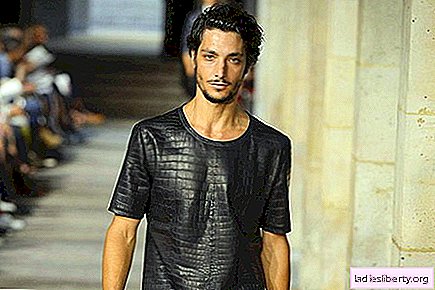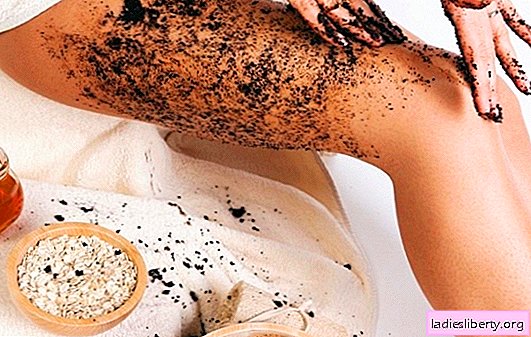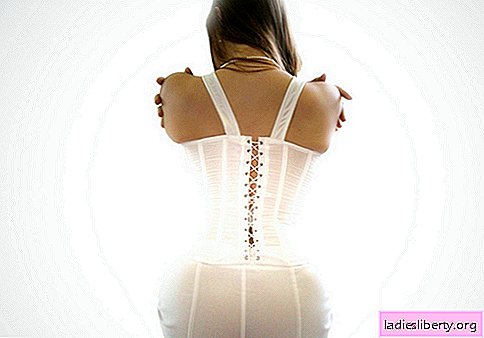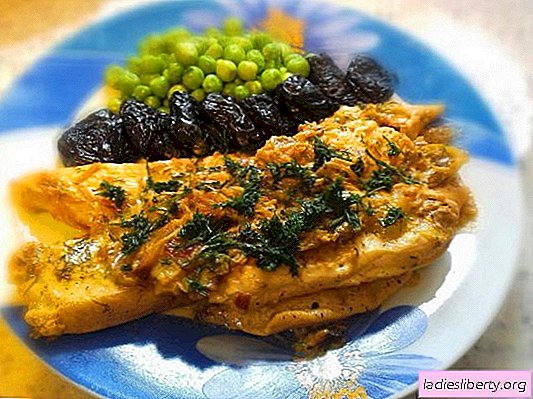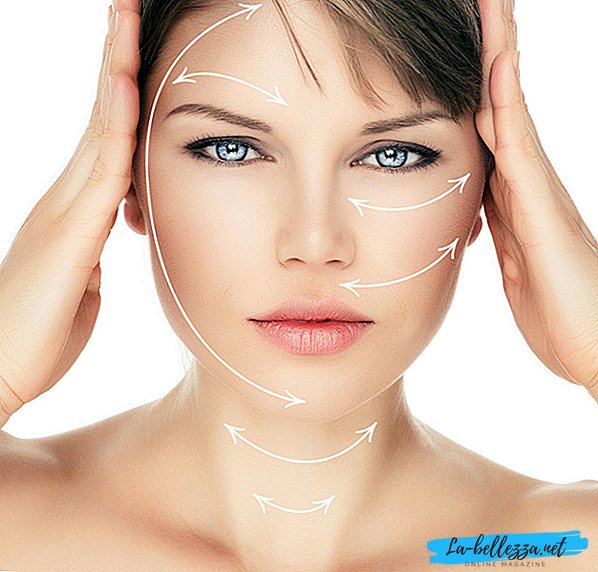
Today, cosmetology offers a huge number of services for facial rejuvenation and facelift: biorevitalization, peels, botox, etc. Such procedures help to moisturize the skin, smooth fine wrinkles and slightly tighten the contour. But, if there is a change in the contour and sagging of the tissues of the face (ptosis), they will be of little effect. Previously, when such changes were prescribed plastic surgery for a lift. After such operations there is a very long and painful recovery process.
Now, thanks to the new developments, there is an innovative method for adjusting the face with the help of Cog mesotheum. The thread lift method was developed in Korea. This is an alternative and popular method that allows you to restore clear contours with minimal surgical intervention. The recovery process is quite fast and the risks of complications are minimal.
What are Kogi threads?

Cog mesothreads are threads with notches implanted into the dermis. Such threads are installed using small needle punctures and holding them under the skin. They are not perceived by the body as a foreign body and are not rejected, but are fully compatible. Such mesothreads dissolve in 1-1.5 months.
Unlike other mesoniths, they consist of a guide needle, a hollow tube (cannula) and mesothread with notches, which allow you to tighten the skin. These notches are located in different directions, which ensures reliable fixation. Laser sharpening of the needle helps to quickly and practically without injuries penetrate into the dermis.

The threads themselves are made from biodegradable material, which is perfectly soluble in the dermis. After their installation, they apparently tighten the skin because of the notches. Later, upon resorption, they begin to secrete components that activate the growth of connective tissue, elastin and collagen. Thus, metabolism occurs at the cellular level, which improves the structure, quality and tone of the skin. Microcirculation improves and cells get more nutrients and oxygen.
After complete resorption, the Cog threads leave a dense natural frame that continues to maintain the established shape of the face or body for a long time. The final decay products of the mesoniths are water and carbon dioxide, which are completely eliminated from the body. After the effect expires, the procedure can be repeated.

Of course, there is one significant disadvantage - it is expensive. The technology of bracing with mesothreads of the Kogi gives a result at the level of plastic surgery with a long-lasting effect, but the restoration and the process of carrying out is different in the short term. They are practical, safe and effective.
The following aspects can be attributed to the peculiarities of the Cog (Kogi) maisonite:
- For processing one zone does not require a large number of threads. 4-5 pieces are enough;
- They are used not only for mild forms of omission, flaccidity and displacement of the skin, but also for average cases of formation of bryl and “crawling” facial oval. With strong changes, even this method will not help;
- The result of the braces lasts for 3-4 years, in contrast to the linear threads;
- Perfectly combined with the implantation of other mesoniths;
- Repeated procedure involves a smaller amount of reinforced mesoniths;
Thanks to the multidirectional notches, the Kogi threads perfectly hold the dermis.
Types of threads
 Tightening with the help of mesoniths is now very popular. It is increasingly being chosen by patients and increasingly recommended by surgeons. The process is not traumatic and there are practically no complications, and the recovery period takes on average from 2 weeks to 2 months. It depends on the patient's age, anatomical features and compliance with the features of postoperative care.
Tightening with the help of mesoniths is now very popular. It is increasingly being chosen by patients and increasingly recommended by surgeons. The process is not traumatic and there are practically no complications, and the recovery period takes on average from 2 weeks to 2 months. It depends on the patient's age, anatomical features and compliance with the features of postoperative care.
It must be emphasized that this method will not give results to clients with severe ptosis and with a weakened tone of the facial muscles.
The cosmetology industry offers a wide range of selection of mesothreads. Most popular and The following threads are widely used:
- Korean Omega threads (V-L Cogs, Original 19G V-L, Spike 19G, Little Omega V-L 23G);
- Korean threads Beaute 'lift V Line (Twin pigtails, Screw springs, Cog notches, Rose thorns);
- Korean EVE COG threads (they produce about 10 types of threads of different lengths and sizes);
- Korean threads VERSATILE Uni ((PDO) material polydiaxanone).
Which threads you need to use is decided by the doctor after consultation and examination. Materials for the procedure of tredlifting (correction of tissues of the face and body) are selected individually. The durability of threadlifting depends on the material from which the yarns are made, their shape and depth of application, the method of reinforcement and fixation in the tissues.
Mesothreads Kogi are divided into the following groups:
- PLLA - containing polylactic acid, which gives a lifting effect, similar to fillers. Activates enhanced collagen production. The result is stored for about a year. Reinforcement is carried out for any parts of the face and neck. Differ in special durability;
- PDO - the thread is made of polydioxanone (linear polymer). It does not cause tissue rejection. Resolves within six months of the year. In its place leaves a dense collagen frame. The result lasts up to 2 years;
- Double cog - a thread with double-sided notches in the form of a “Christmas tree” or the letter “V”. Thanks to these notches perfectly fixes the shape with an excess of soft tissues;
- One sided - a thread with multidirectional notches located on one side only. It is used in milder forms of age-related skin changes;
- Multidirectional - thread with multidirectional notches, which are located around it. This thread effectively eliminates the syndrome of "baked apple" - small, mesh wrinkles, and is also used to fix the excess amount of soft tissue.
Also, the material is divided into: non-absorbable, absorbable, combined and with notches (Kogi).
Action Threads Cog
 Cog threads are designed to restore the contour of the face and eliminate various age-related changes in the skin. The lifting effect they have is manifested due to the formation of a fibrous skeleton. The procedure gives a visually noticeable result:
Cog threads are designed to restore the contour of the face and eliminate various age-related changes in the skin. The lifting effect they have is manifested due to the formation of a fibrous skeleton. The procedure gives a visually noticeable result:
- The chin is tightened and contoured facial contours;
- Small mimic wrinkles are eliminated, including nasolabial and reticular.
- Smooth wrinkles on the forehead.
- Eyelids and eyebrows rise.
In addition to lifting, the threads help restore normal metabolism at the cellular level. As a result, the synthesis of type 1 collagen begins. This occurs when the material is completely dissolved and releases water and carbon dioxide. Collagen “belts” arise around the injection site, which keep the tissues in position.
Kogi mazonites correct chin, flews, nasolabial folds, gravitational ptosis in a light form, “Venus” ring around the neck, eyelid ptosis, etc. They eliminate the manifestations of lightweight gravitational ptosis, make the shape of the face clearer.
The number of mesothreads Kogi depends on the treated area:
- Eyebrows - 3-5 pieces;
- Zones of the forehead, chin and cheeks - 10 - 15 pieces;
- Neck - 20-25 pieces;
- Nasolabial folds - 5-10 pieces;
- Contouring of the facial contours - 40 - 50 pieces.
Mesonite Cog has two common generations: 3D and 4D. They differ in the following:
- Cog 3D needle threads are mainly used for enhanced tightening of the middle third of the cheeks and face. The introduction of these threads is quite painful. Not only the surgeon, but also a specially trained cosmetologist can install them;
- Mesonith 4D equipped with a large number of notches, which are located in 4 directions. Installation is very difficult, so they are installed by a surgeon. The operation is quite serious, but the effect is very noticeable.
Indications and contraindications

Correction by Cog mazonity is shown to persons aged from 30 to 50 years. After this age limit, the result will be little noticeable. This method can be combined with any other cosmetic procedures. The introduction of mesoniths is advisable if other, less complex technologies, including hyaluronk injections, do not help.
The indications of the use of this technique include:
- Bryli;
- Double chin;
- Gravitational ptosis in mild and moderate severity;
- Oval line offset;
- Small mesh and mimic shallow wrinkles;
- Face asymmetry;
- Nasolabial triangle;
- The omission of the eyelid and eyebrow lines;
- Flabbiness of the skin;
- Deficiency of soft tissues of the face;
- Ring of "Venus" on the neck;
- Thoracic folds;
- Liposuction defect;
- Postpartum scars;
- Flabby buttocks, arms and abdomen.
The technique of introducing the mezzanise of the Kogi involves the violation of the integrity of the skin and the installation of foreign material and anesthesia. Therefore, this procedure has a number of contraindications:
- Individual intolerance to drugs or their individual components, which are used during the procedure;
- Acceptance of blood-thinning drugs;
- Problems with the blood system;
- Cardiovascular diseases;
- Keloids;
- Diabetes;
- Mental and neurological diseases;
- Infectious, bacterial, viral and fungal diseases;
- Exacerbations of chronic diseases;
- Dermatological diseases, incl. psoriasis;
- Oncology;
- Autoimmune diseases and weakened immunity;
- Suffered surgery less than six months;
- Perinatal and lactation periods;
- Strongly pronounced changes in soft tissues and thick skin.
At the age of 30 years, it is contraindicated to carry out reinforcement with mesothreads, even if there are serious defects.
How is the procedure?
 In order to carry out the operation on the introduction of the Kogi mazonithy, it is necessary to clarify its feasibility and eliminate contraindications. Therefore, the surgeon must take anamnesis and conduct an inspection. In conclusion, the collection of medical history and examination, the doctor can determine the amount of work and what specific material will be needed. When the method is approved by the surgeon, preparation, which is as follows:
In order to carry out the operation on the introduction of the Kogi mazonithy, it is necessary to clarify its feasibility and eliminate contraindications. Therefore, the surgeon must take anamnesis and conduct an inspection. In conclusion, the collection of medical history and examination, the doctor can determine the amount of work and what specific material will be needed. When the method is approved by the surgeon, preparation, which is as follows:
- For 2 weeks, be examined by a therapist, take a complete blood and urine test, make an electrocardiogram. Based on the results, an additional examination may be prescribed;
- 2 weeks before the procedure, you must stop taking any medication;
- A week before the procedure, give up alcohol, tobacco, coffee, black tea, energy drinks;
- A week before the introduction of the mesoniths, do not carry out any hardware procedures, peels, injectable anti-aging procedures, etc .;
- 3 days before the procedure, avoid sports and other physical activity.
The introduction of mesoniths implies a violation of the integrity of the skin, so it should be done by a trained cosmetologist or surgeon. Accordingly, it is necessary to check the qualifications of the doctor or cosmetologist and permission to carry out such manipulations. Also, it is recommended to check the certification of the materials used.
 Thread Lifting
Thread LiftingThe stages of the introduction of the monkey thread Kogi:
- The skin is cleared of dust and sebum with the help of professional cosmetics;
- It is disinfected with an antiseptic solution;
- Anesthetic is applied in the form of a cream. Sometimes it is not enough, so taking an analgesic before the procedure is not forbidden. Also, the doctor may use an injection of an anesthetic drug;
- A marking scheme is applied to limit the areas to be corrected;
- All materials are printed on the patient;
- The point of insertion of the cannula is determined and a puncture or incision is made for its insertion with a depth of 3-5 mm;
- Next, mesothreads are introduced. The material is introduced using a special low-impact needle from medical steel with laser sharpening.
- Before inserting the needle, the surgeon tightens the skin with his hand to the desired position for fixation;
- The needle is inserted parallel to the surface of the skin. With the help of knots and notches, the threads communicate with each other, forming a skeleton. The doctor pulls the thread up, while notches cling to the muscles from the inside and tighten them. This is a painful process. In places where the fabric is going to form dimples, which eventually dissolve;
- Fixing the edge of the thread, the doctor pushes against the skin and the mesonit is separated from the needle. Then the needle is removed;
- For one procedure do not install more than 12-15 threads, as possible complications. The procedure takes from half an hour to an hour, depending on the number of injected threads;
- The insertion points are taped or stitched onto cuts and elastic dressings. It must be worn for about 5-7 days.
After the manipulations, the doctor talks about what not to do after this procedure and how to care in order to quickly recover and enhance the effect. Special physician control is not required, so after 30-40 minutes the patient can go home.
With a strong sagging of the skin, the method of introducing mesoniths will not help. Only plastic surgery will cope with such a defect.
Recovery after lifting

After the procedure for the introduction of mesogars, the Kogi will need to undergo a recovery period, since the procedure assumes the presence of subcutaneous microtraumas. Swelling, bruising, hematoma, and cavities may occur in places of tissue draining. Pain is inevitable. The more threads, the longer the rehabilitation period. It is also important to consider at what depth they were set, the anatomical features of the patient and the age. Recovery can take from a week to two months.
In order for the recovery to take place without complications and in the short term it is necessary:
- After removing the dressing, treat the area affected by antiseptics. The best tool is hydrogen peroxide;
- Pain can be removed anesthetic solutions and ointments that do not contain alcohol;
- Cooling compresses can be made;
- Avoid sudden temperature changes;
- Limit physical exertion;
- To refuse at least temporarily bad habits;
- Minimally reduce the interaction with the area over which the manipulations were performed;
- If the procedure was performed on the face, then it is advisable to drink liquid food for a week;
- Do not open your mouth wide and avoid strong facial reactions.
Possible consequences

After the procedure for the introduction of threads Kogi may experience side effects. They can be local and short-term, which will pass on their own within a few days or a week.
Side effects include:
- Pain;
- Puffiness;
- Seals at the injection sites;
- Bruises and hematomas;
- Redness and inflammation;
- Unnatural skin color in places of suspenders;
- Subcutaneous folds and bumps;
- Asymmetry, hollows and gathering.
K more serious and delayed side effects include:
- Internal tissue inflammation;
- Neuropathy;
- The appearance of scars;
- Thread breakage;
- Teething thread of the skin;
- Migration of material to the surface of the skin;
- Transmission of the entered threads;
- Not absorbable obvious irregularities.
In case of serious violations and not passing it is necessary to consult a specialist. In severe cases, mesothreads are subject to removal and a subsequent course of antibiotics and antibacterial drugs.
Pros and cons of Cog threads

Each cosmetological procedure has its positive and negative sides. It is especially important to know the pros and cons of procedures that imply a violation of the integrity of the skin.
The positive side of the introduction of the mezzanine Cogi include:
- No hospital required;
- Short procedure;
- Fast recovery;
- Achieving results in one session;
- Long-term effect;
- Do not reject tissue;
- Preserved natural facial expressions;
- Can be used for different parts of the body;
- Practically non-traumatic procedure;
- Can be combined with other cosmetic procedures.
The negative sides include:
- Short-term side effects cannot be avoided (bruises, hematomas, edema, lumps and pain);
- High cost;
- The result depends on the professionalism of the surgeon or cosmetologist;
- Age limited;
- Painful procedure, even under local anesthesia.
Photo before and after
Basically, customers are satisfied with the results after the Kogi straps. Serious side effects are rare, and short-term side effects overlap the result. Visually, you can assess the effect that gives the lifting of the mesothreads in the photos below.
 Face lift
Face lift  Tightening the lower third of the face and cheeks
Tightening the lower third of the face and cheeks  Tightening the cheeks and eliminating nasolabial folds
Tightening the cheeks and eliminating nasolabial folds  Circular Lifting Kogi Threads
Circular Lifting Kogi Threads  Circular face and neck lift with Kogi threads
Circular face and neck lift with Kogi threads  Tightening the nasolabial triangle, cheeks and chin
Tightening the nasolabial triangle, cheeks and chin
